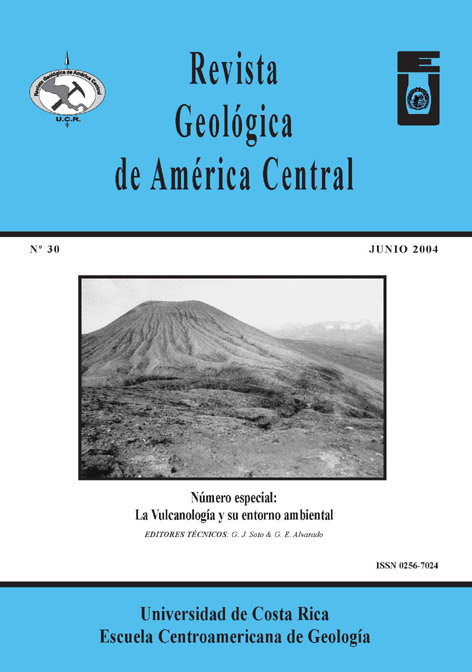Abstract
33 pyroclastic cones in Costa Rica, were selected to study their morphometric characteristics.The regression obtained for the height and basal diameter ratio (HCO/WCO) is 0.17, which is in good agree-ment with data obtained for cones located in other places of the world. The wide dispersion found is due todifferences in the factors that control eruptions that originate pyroclastic cones: ejection velocity and angle,vent diameter, etc. The analysis of the top and basal diameter ratio (WCR/WCO) and slope (S) enables the iden-tification of several groups that broadly coincide with their position relative to the volcanic arc. Cones loca-ted in the arc constitute a heterogeneous group, in contrast to cones located as satellites in front of the arc andbehind it. The former tend to have wider tops and steeper slopes than the latter. The cones in front of the archave different sizes but a uniform WCR/WCO ratio. Back-arc cones possibly have been exposed to erosion fora longer period and are considered to be older.Correlation between cone morphology and chemical composition has been found. Cones that contain moresilica and less magnesium are higher. Those containing more alkaline and less ferrous materials tend to besteeper. It is proposed that the angle of repose in the growing course of the talus depends on the viscosity ofthe erupting material. Nevertheless, the regressions obtained indicate only a moderate correlation; the geo-chemistry is considered to be just one of several factors that control the final shape of scoria cones.

